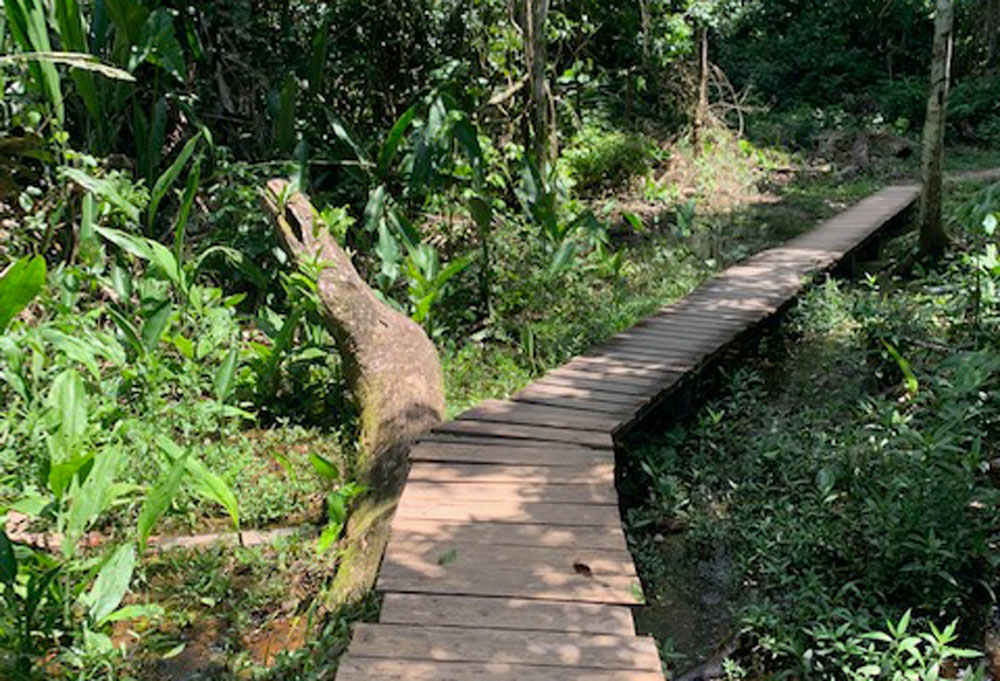It is January – summer time in Brazil and rainy season.
I am sitting in a long-boat a rustical wooden boat, that is struggling up the River Muru in the state of Acre in Amazonia. The old diesel machine produces an infernal noise.
It is loaded with 12 white people, our luggage – in portugese: bagagem and four Indigenous men.
We, the white people, most of us have met for the first time in Cruzeiro do Sol – the last city in the very West of Brazil with an airport. We are coming from different parts of the world: the Netherlands, Belgium, France, Germany, Ireland, Portugal, Israel, U.S., Peru and Brazil. We spent two nights at a simple hotel called Swamy. The buildings and streets remind me very much of India. Streets, with potholes, some buildings are not inhabited and therefore appear rotten.
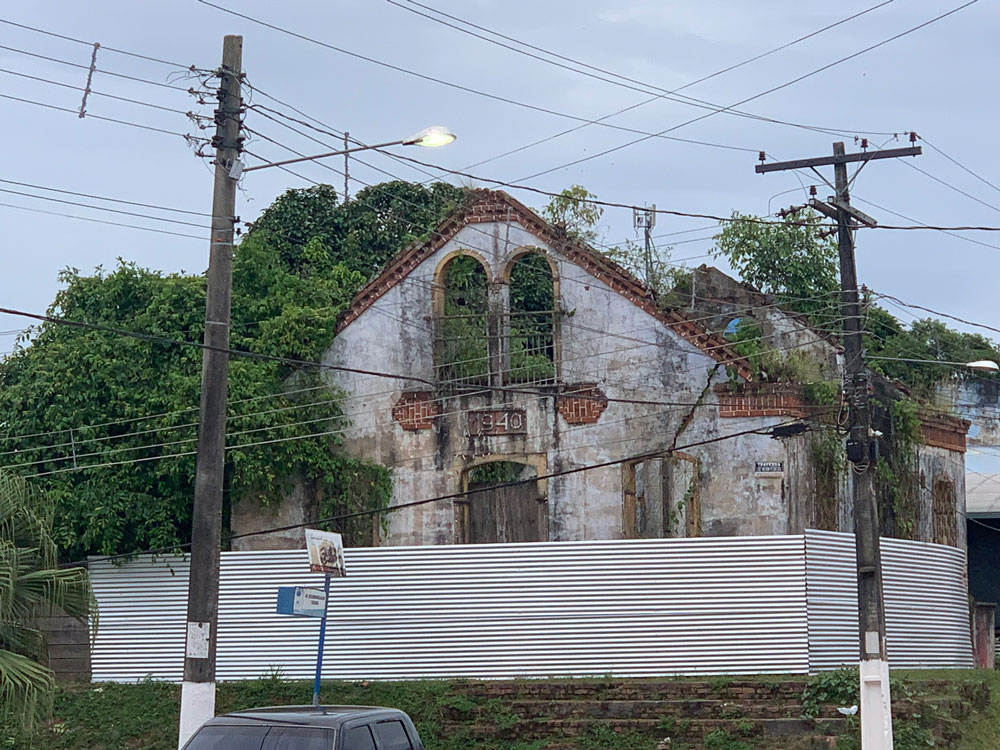
The rain season does its work as well. We had one day in Cruzeiro and spent the day with last shoppings for the jungle: rain boots, sun cream, a folding chair, mosquito nets … the next morning we had to get up early. The overland bus left at 7o`clock. Not much sleep so far on this journey.
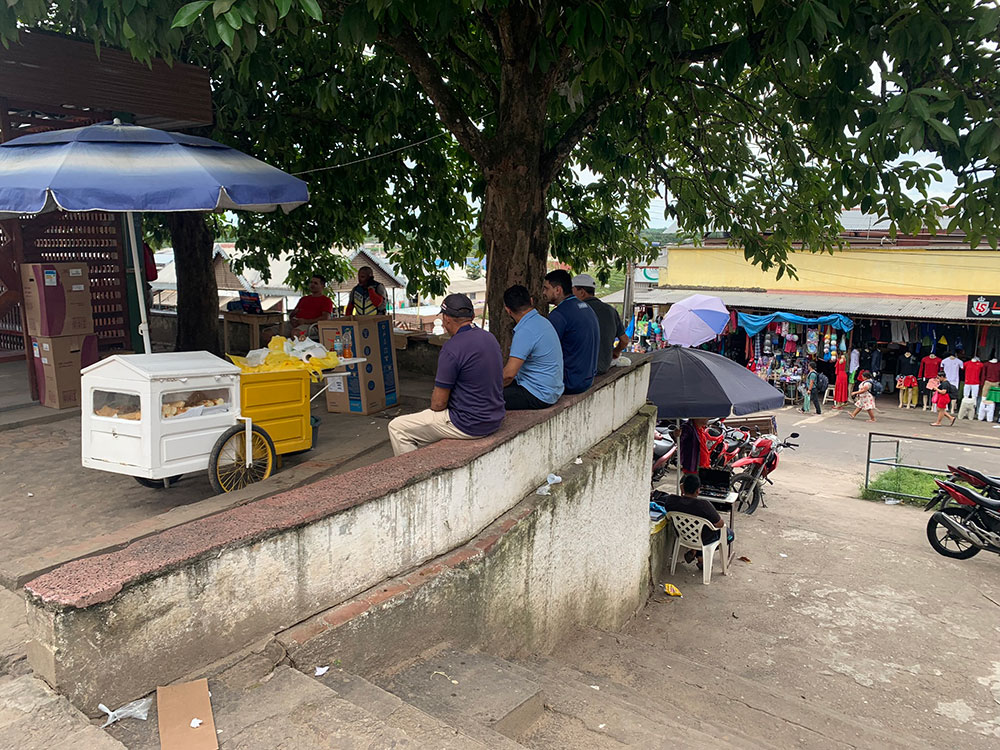
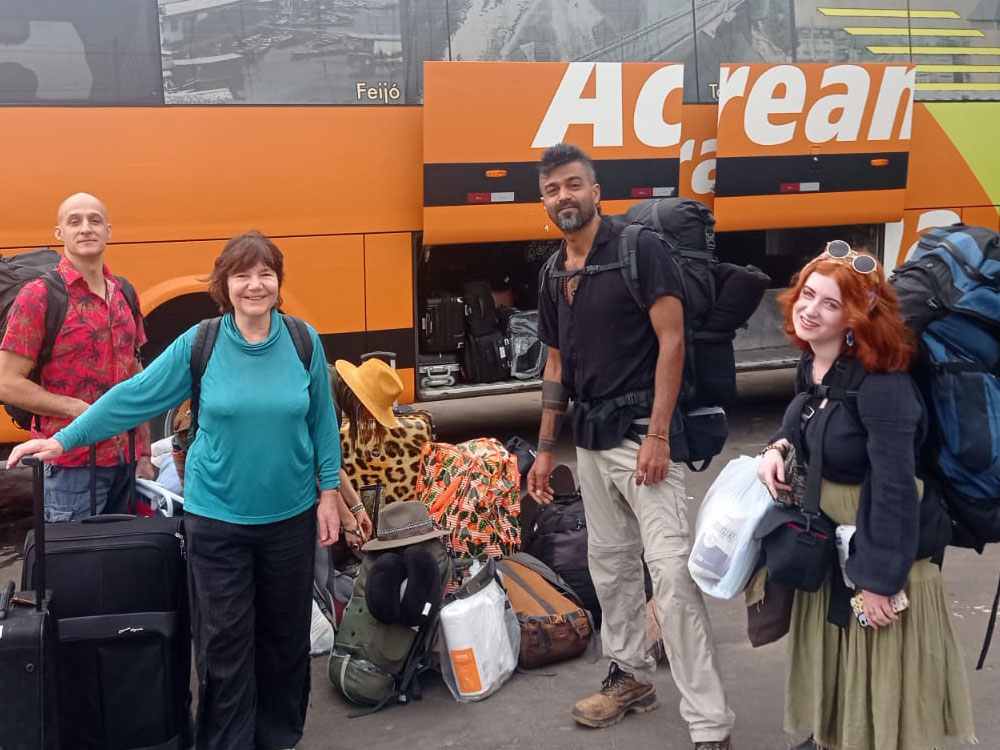
It feels good to have no roof above our heads. I feel the sun and the wind on my skin.
I have been travelling in 5 planes, in a row.
Starting in Frankfurt flying with Alitalia to Rome, from there an 14 hours overnight flight to Sao Paulo, (with a lovely break seeing my old friend Plinio, more later) from Sao Paulo to Brasilia, from there via Rio Branco to Cruzeiro do Sol. All within 2-3 days and nights.
The flights were followed by a short overnight stay in Cruzeiro do Sol.
Leaving early in the morning by bus for our next destination: Tarauaca; enduring a bumby bus ride on a road full of potholes. The bus windows were covered with plastic stick-ups, so you could not see the outside. Sitting on worn-out seats. At least your legs had more space than in the plane.
Having reached Tarauaca waiting endlessly for someone to pick us up when the bus dropped us in an unknown spot outside of town.
After realizing nobody is going to come and pick us up; we organized two taxis to take us down to the river. The private “taxi” was too small to take us all down to the river. E.g. the Dutch lady had a huge a hardtop suitcase with a jaguar design on it. It took already half of the trunk. The lady herself was slim but in her way a bit like her suitcase, pretty on the outside, correct and polite – but you would not think of opening a jaguar suit case, would you.
In the end we managed to organize a second car for a reasonable price.
Finally reaching our last destination, we were searching for the boat – with no loading ramp in sight to board.
Bild Wo ist unser Boot?
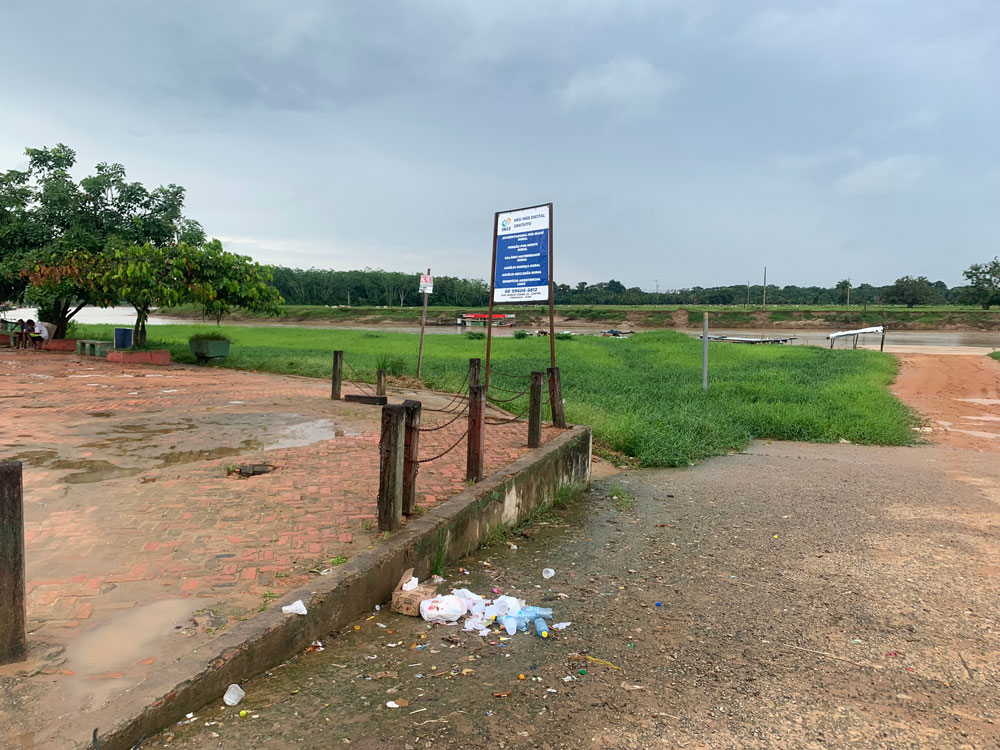
Guess what – we are exhausted.
The little town we landed in, called Tarauacá, appears like a wild-west settlement, almost collapsing stores, improvised booths as kitchens with plastic chairs for the customers to sit at wobbly tables, beggars and neglected looking people strolling along the river bank path, abandoned dogs …
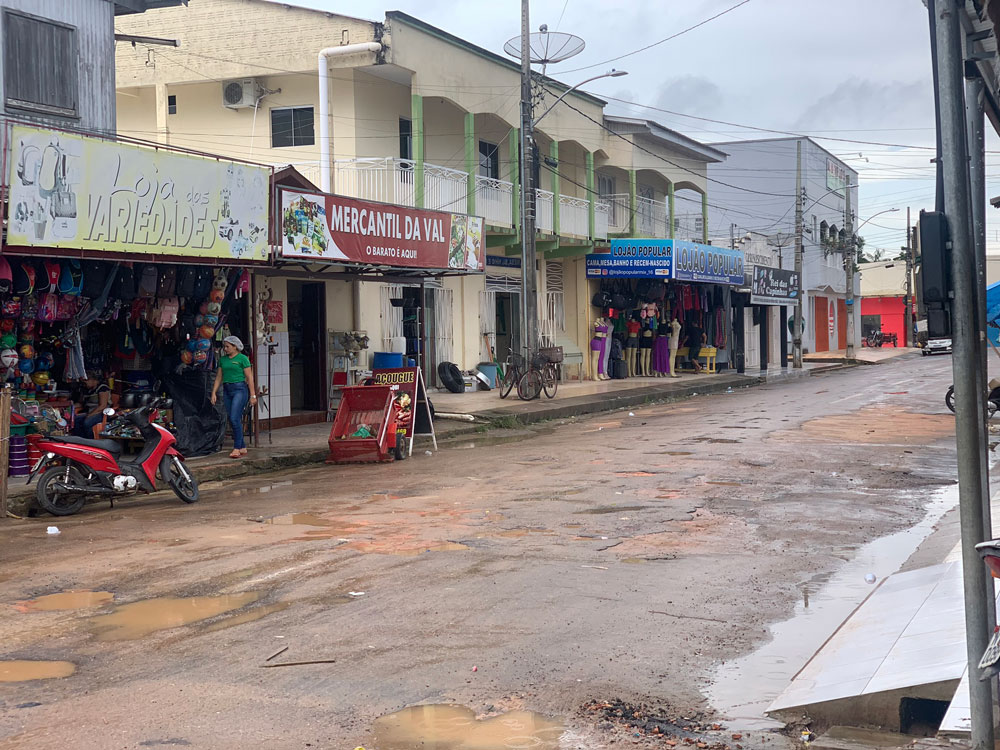
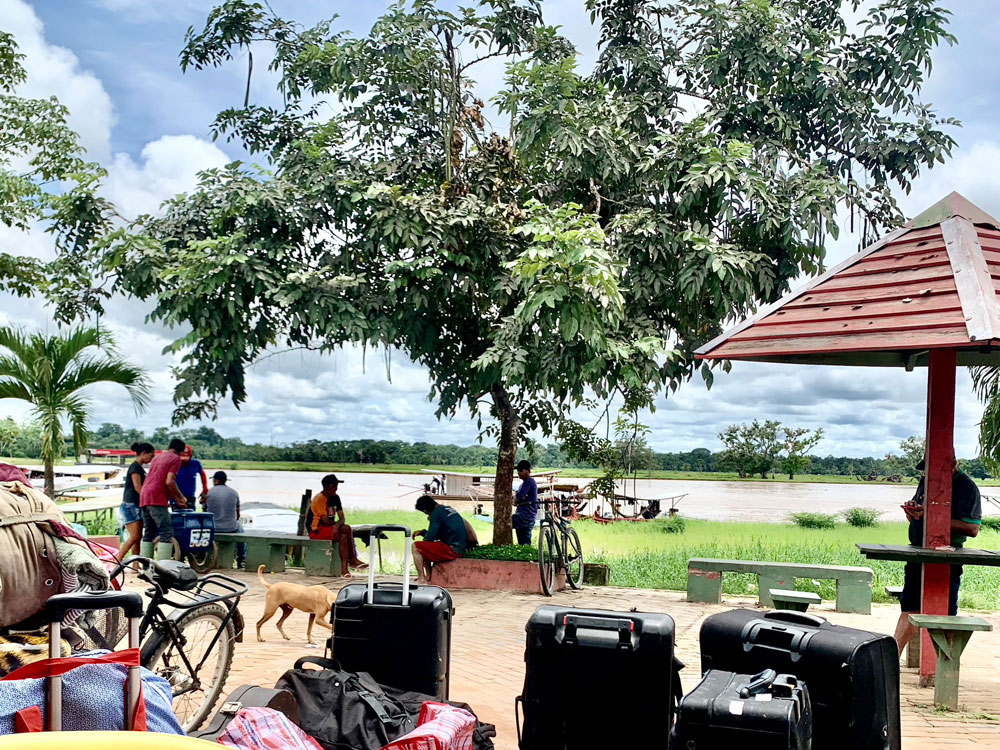
In the end – we are found by the indigenous Huni Kuin. We, the travelling group is relieved. They lead us to the boat quite some way out of the centre. They carry our suitcases and enter the wobbly boat very skilfully with our luggage on their shoulders.
The indigenous men are taking us to their village in the rain forest. A place called Igarapedo Caucho.
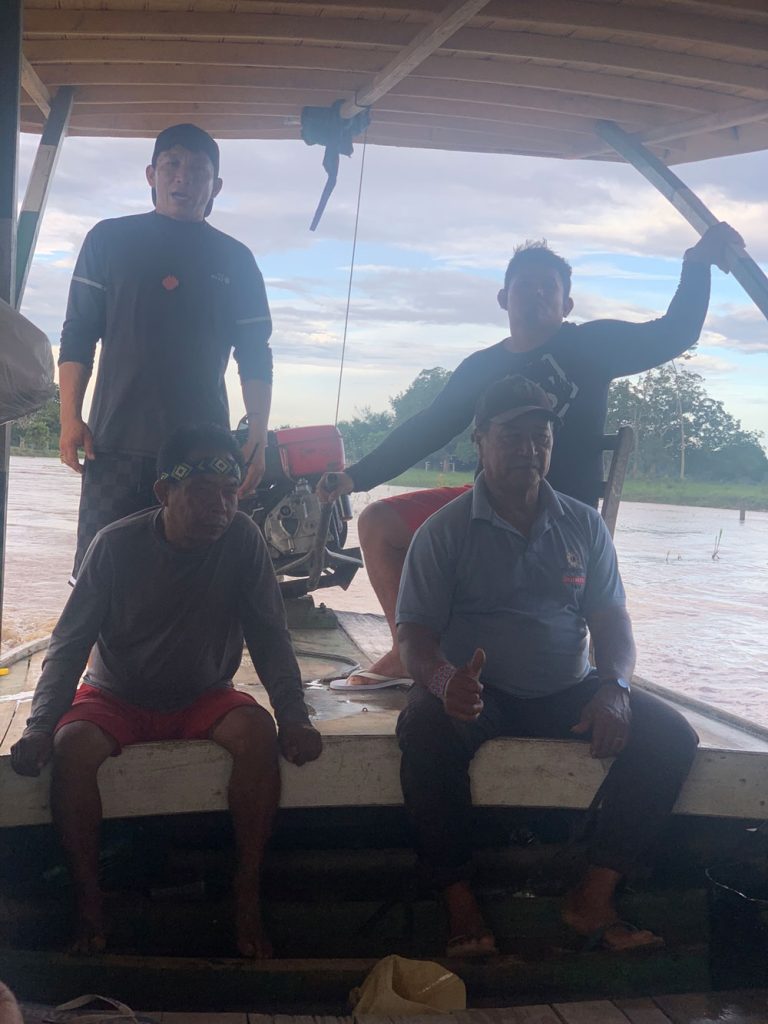
On both sides of the river the land has been cleared of trees. You see cattle grazing or just green meadows. The water is brown, muddy from the heavy rain. It is January – summer time in Brazil and rainy season.
Even though the motor of the boat produces a hell of a noise, being on the water calms us/me, it feels like arriving – after a long journey.
We arrive after two hours on the boat. The embankment is steep but a long wooden staircase has been built.
Only later we learn that an anaconda lives under the water-dived steps. The anaconda is biggest snake on earth and strangles its victims to death. Once it caught you, there is no escape. Good we do not know.
We take the last wobbly steps onto another boat to reach the staircase, finally we have stable ground under our feet. It is hot and damp. We are excited to meet our hosts, the indigenous tribe of the Huni Kuin.
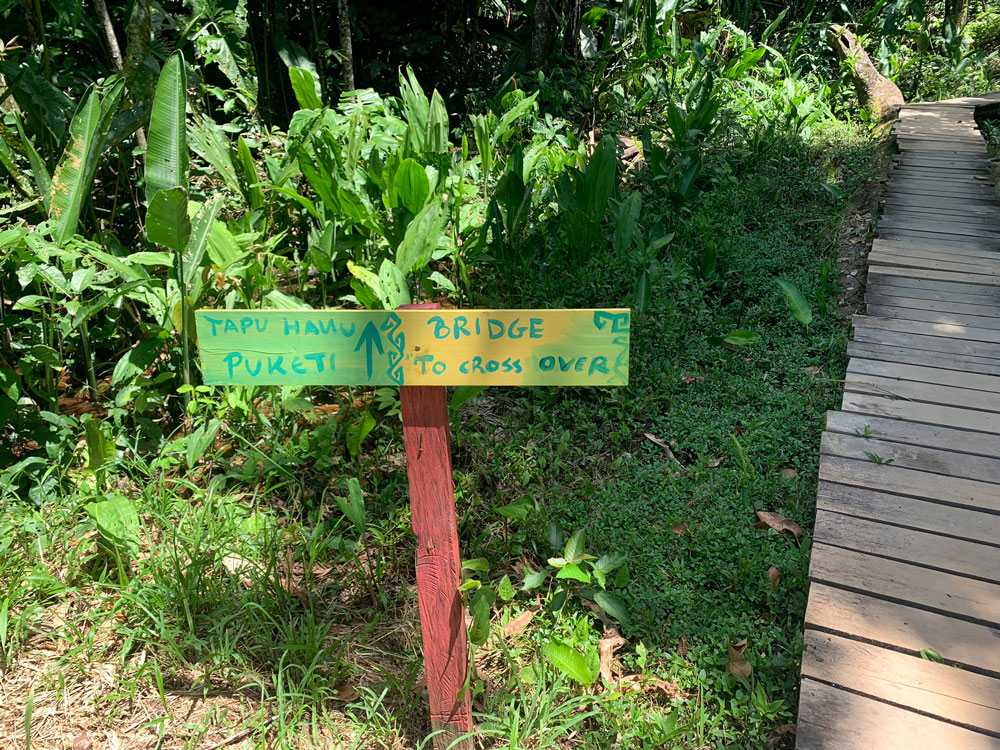
A last walk through a settlement, over a small wooden bridge, along a few bamboo huts, a wooden fence, and we enter the village of Chief Cassiqui Nasso.
The tribal people are very gentle and friendly. There is a warm welcome. There is curiousity on both sides. We look at each other, new unfamiliar faces, with an open expression. Very soon they help us to hang up our hammocks and mosquito nets – this already connects us. After establishing us in the wooden guest house we meet to take our first meal together. In a simple wooden building with a long wooden table covered by a plastic table cloth. The walls are painted with the myths of the creation of the Huni Kuin.
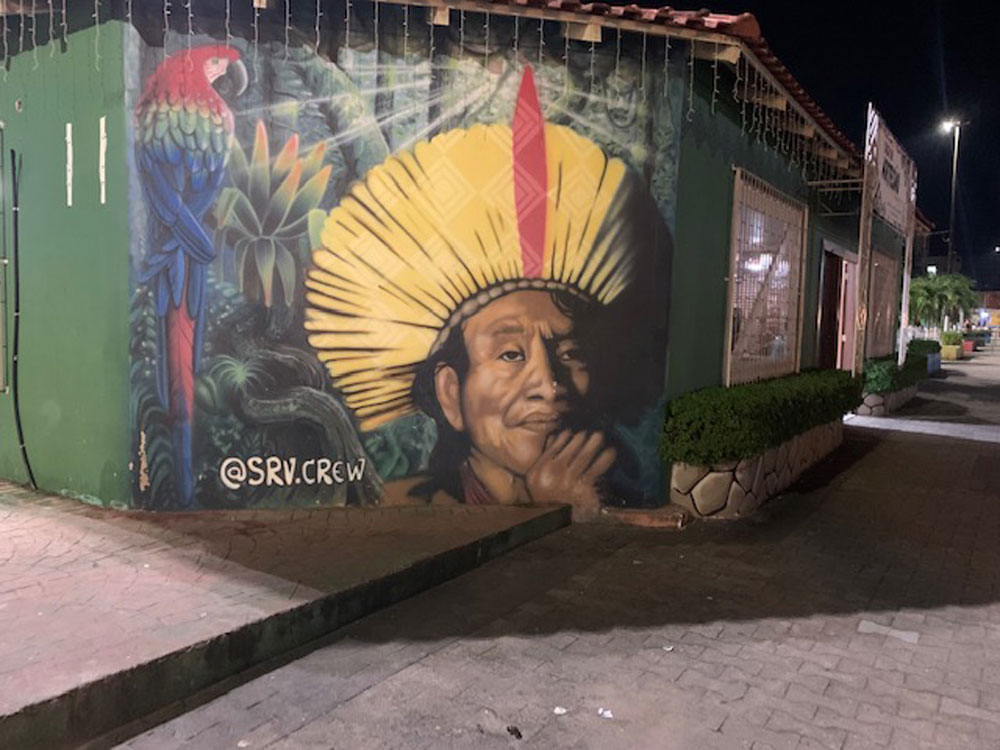
The food is reached through a window between the kitchen and the dining room, where the kitchen ladies cook the meals for all of us. Babies and children are to be found in the kitchen as well. One big family. We all eat together.
Our tribal life has been starting.


